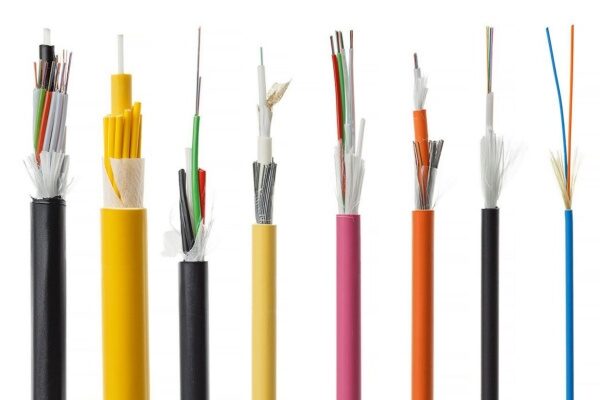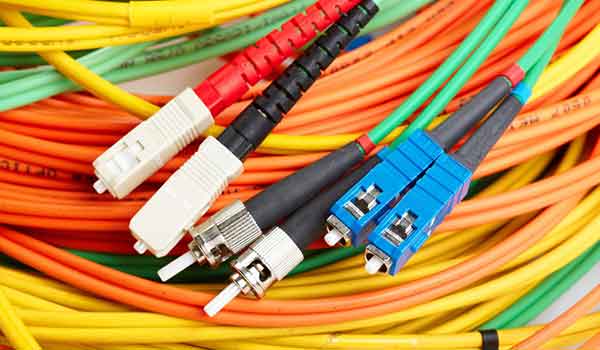

ШИЛТЭН ОПТИК КАБЕЛ VERI
Шилэн кабель нь орчин үеийн харилцаа холбооны сүлжээний чухал бүрэлдэхүүн хэсэг юм, хол зайд өндөр хурдны өгөгдөл дамжуулах боломжийг олгодог. Аж ахуйн нэгжүүд болон хувь хүмүүс хурдацтай ажиллахад илүү их найдаж байна, найдвартай интернет холболт, Шилэн оптик технологи нь өгөгдлийг дамжуулахад алтан стандарт болж гарч ирэв. Шилэн шилэн кабелийн хоёр үндсэн хэлбэр нь зах зээлд давамгайлдаг: Ганц горим болон Үсрэг нь олон шилэн кабель.
Энэ хоёр төрлийн шилэн шилэн хоорондын ялгааг нь сүлжээний дэд бүтцийн талаар мэдээлэлтэй шийдвэр гаргахад чухал ач холбогдолтой юм, Тус бүр нь тодорхой програмаас хамаарч түүний хүч чадал, сул талууд байдаг. Энэ өгүүллэнгүй Veri кабель нь нэвчдэг Ганц горим ба Multimode Filecie Pilect Cables хоорондох гол ялгаа, Дизайн зэрэг хүчин зүйлийг судлах, жүжиг, зардал, болон ашиглалтын хувилбарууд.


Ганц горим ба Multimode Fibers-ийг харьцуулахаас өмнө, Шилэн оптик технологийн үндэс суурийг ойлгох нь зайлшгүй шаардлагатай.
Шилэн оптик кабелийн кабель нь цахилгаан гүйдэл гэхээсээ илүү гэрлийн дохиог ашиглан өгөгдлийг дамжуулдаг. Тэд шилэн эсвэл хуванцар нимгэн судлуудаас бүрдэнэ (үндсэн), цөм рүү гэрлийг тусгасан бүрхүүлээр хүрээлэгдсэн. Энэ явцлал, Нэв Нийт дотоод тусгал, гэрлийн дохиог хамгийн бага хүчээр алдах боломжийг олгодог. Шилэн шилэн кабелийн кабелийг илүү өндөр зурвасын өргөнээр хангах чадвартай байдаг, хөндлөнгөөс оролцсон, илүү өргөтгөсөн дамжуулалтаас илүү Уламжлалт зэсийн кабель.
Нэг горимын эслэг (Сми) нэг зам дагуу гэрлийн дохиог авч явах чадварыг нэрлэв, эсвэл горим, тухай үед. Үүнийг маш жижиг диаметртэй цөм ашиглан ихэвчлэн ашигладаг 8 руу 10 микрон. Цөмийг хүрээлж буй нөмрөг нь ерөнхийдөө байдаг 125 микрон, Ихэнх шилэн оптик кабелийн стандарт.
Жижиг гол хэмжээ нь гэрлийн тусгалын тоог хязгаарладаг, бууралтыг бууруулах (дохио) дохиолол нь доройтолгүйгээр аялах боломжийг олгодог. Ганц горимын утас дээр, гэрэл нь цөмөөр шулуун шугамаар дамждаг, цөөн тооны дохионы гажуудал, илүү өндөр зайд дамжуулах чанарыг даван туулах.
Ганц горимын утаснуудад зориулагдсан Алсын зайн харилцаа холбоо. Учир нь тэд дохионы алдагдал, гажуудлыг бууруулдаг, Тэд өгөгдлийг холын зайд дамжуулах боломжтой 100 Километр ба түүнээс дээш тооны дохиоллыг өдөөх шаардлагагүй (хувьцаагч). Эдгээр утаснууд нь ихэвчлэн ажилладаг 1310 nm болон 1550 nm долгионы урт.
Түлхүүр давуу талууд орно:
Гэсэн хэдий ч, Ганц бие горимын шилэн шилэн оптик нь ихэвчлэн илүү боловсронгуй гэрлийн эх үүсвэр шаарддаг, лазер гэх мэт, болон тэдгээрийн суурилуулалт нь олон мултимод фибертэй харьцуулахад илүү их үнэтэй байж болно.
Ганц бие горимын шилэн нь сонгосон сонголт юм:
MultimImode эслэг (Эвэмхамтраа баг) Энэ нь олон зам дагуу гэрлийн дохиог авч чаддаг тул нэрээ авдаг, эсвэл горим, нэгэн зэрэг. Мультимодын эслэг нь нэг горимын эслэгээс хамаагүй том хэмжээтэй юм, ихэвчлэн эргэн тойронд байдаг 50 руу 62.5 микрон диаметртэй. Илүү том цөм нь олон гэрлийн дохиог зөвшөөрдөг (эсвэл горим) нэг дор сурталчлах.
Энэ дизайн, Нэгэн зэрэг кабелиар аялахыг зөвшөөрдөг, Илүү олон дохионы тусгал, модаль тархалтыг танилцуулж байна (гэрлийн импульс тархах), Илүү урт холын зайнаас илүү өндөр дохиоллын алдагдал руу хөтөлдөг. Гэсэн хэдий ч, богино зайд, MultimImode шилэн үр дүнтэй тоглодог бөгөөд зардал багатай байдаг.
Мультимодын утаснуудыг оновчтой болгож байна Богино зайтай харилцаа холбоо, ихэвчлэн бага байдаг 2 километр, гэх мэт орчинд ихэвчлэн ашигладаг Орон нутгийн сүлжээ (Хар тань) болон мэдээллийн төвүүд Богино зайд өндөр хурдны дата дамжуулалт хийх шаардлагатай газар.
Түлхүүр шинж чанарууд орно:
Multimode Fible-ийн үр ашиг тусын нэг нь хямд гэрлийн эх үүсвэрийг ашиглаж болно, гэх мэт Хялбар, анхны зардлыг нэг горимын эслэгээс доогуур болгох. Гэсэн хэдий ч, дохионы чанар нь зайг илүү хурдан доройтуулдаг, урт хугацааны дамжуулалт хийхэд тохиромжтой болгох.
Multimode Fiblise нь ихэвчлэн ашиглагддаг:
| Онцлог | Нэг горимын утас | Multimode Fiber |
|---|---|---|
| Үндсэн бүтий хэмжээ | 8-10 микрон | 50-62.5 микрон |
| Уртзах | 1310 nm, 1550 nm | 850 nm, 1300 nm |
| Зай | Шалтгаална, хамаарна 100 км ба түүнээс дээш | Шалтгаална, хамаарна 2 км |
| Зурвасын өргөн | Бараг хязгааргүй | Өндөр, Ганц горимтой харьцуулахад хязгаарлагддаг |
| Зардал | Хямд үнэтэй гэрлийн эх үүсвэр, тоног төхөөрөмжийн улмаас өндөр | Бага суулгалтын зардал |
| Хэрэглээ | Холын зайн харилцаа холбоо, зарим, мэдээллийн төвүүд | Хар тань, мэдээллийн төвүүд, кампус сүлжээ |
| Гэрлэлт | Lasaer | LED эсвэл vcsel |
| Сунгах | Бага (Дохио бага алдагдал) | Хямд (Илүү их дохиоллын алдагдал) |
Ганц горим ба MultimeImode-ийн фиберийн хоорондох анхан шатны ялгаа юм. Нэг горимын утас оролдох бараг хязгааргүй зурвасын өргөн Учир нь тэд нэг горимоор гэрлийг дамжуулдаг. Эсрэгээрээ, Мультимод утаснууд Богино зайд өндөр зурвасын өргөнийг дэмжинэ, гэхдээ модаль тархалтаас болж зовж шаналал, зурвасын өргөнийг илүү урт хол зайд хязгаарладаг.
Ганц горимын утаснууд нь урт хугацааны харилцаа холбоонд зориулагдсан болно, Мэдээллийг дамжуулах чадвартай 100 км ба түүнээс дээш ДЭЛГЭРЭНГҮЙ БАЙГУУЛЛАГУУД ХЭРЭГЛЭЭ. Мультимод утаснууд, нөгөө талаас, ойролцоогоор хязгаарлагддаг 2 километр Тэдний томоохон цөм, модаль тархалтаас болж.
Зардал нь нэг горим ба Multimode Fibers-ийг сонгоход чухал хүчин зүйл юм. Ганц горимын утаснууд илүү үнэтэй гэрлийн эх үүсвэрийг шаарддаг (худаландчин) болон дамжуулагчууд, Нийт суурилуулалт, тоног төхөөрөмжийг илүү өндөр үнэтэй болгох. Мультимод утаснууд, эсрэгээрээ, LED нь LED эсвэл босоо хөндий, босоо хөндий, (Vcsels). Гэсэн хэдий ч, доод анхны өртөг нь гүйцэтгэлд худалдаа хийхэд ирдэг, ялангуяа илүү урт хол зайд.
ДЭЛГЭРЭНГҮЙ БАЙГУУЛЛАГУУДЫН НЭГДСЭН ХАМГИЙН ХУДАЛДАН АВЧ БАЙНА. Ганц горимын утас дээр, Дотор гэрлийн замаас болж бууралт нь хамгийн бага, энэ нь дохиоллыг доройтолгүйгээр илүү хол зайд аялах боломжийг олгодог. Эсрэгээрээ, Мультимодын утаснууд нь олон гэрлийн замаас илүү өндөрт өртдөг (Бүтдсон) бие биентэйгээ саад учруулах.
Дэлгэлтэх, тарх Модаль тараах, бас нэг гол хүчин зүйл юм. Ганц горимын утас нь аялах дохио өгөх ганц зам байдаг тул маш бага тархалттай байдаг. Мультимод фибрүүдэд, Модаль диспресс нь кабелиар аялахдаа хөнгөн импульс үүсгэдэг, илүү урт холын даяар дохионы гажуудалд хүргэдэг.
The нэг горим ба мултимод шилэн шилэн кабелийн хоорондох сонголт хэд хэдэн хүчин зүйлээс хамаарна, Үүнд зориулагдсан програмыг багтаана, Шаардлагатай дамжуулах зай, ба төсөв.
Дан горим ба мультимод хоёулаа шилэн шилэн кабелийн кабелийн аль нь давуу болон сул талуудтай байдаг, мөн ашиглах шийдвэр нь таны сүлжээний тодорхой хэрэгцээнээс хамаарна.
Хүмүүс эрдэс бодисыг тусгаарлагдсан кабелийг сонсох үед, many immediately think of harsh environments like…
Харилцаа холбоо, цахилгаан дамжуулах системүүд хурдан ургадаг, the demand for reliable and cost-effective…
Том хэмжээний тос, хийн төслүүдэд, Аж үйлдвэрийн кабель нь зөвхөн дагалдах хэрэгсэл биш юм—they are the "nervous…
Цахилгаан холболтын ертөнцөд, кабелийн залгуур—кабелийн чих эсвэл кабелийн терминал гэж нэрлэдэг—байна…
Цахилгааны инженерийн төсөлд зөв резинэн кабель сонгохдоо, it is critical to…
Эрхэм хүндэт түншүүд, үйлчлүүлэгчид: 1-р сарын 29-ний өдөр, 2025 Хятадын Цагаан сарын баяр – Spring…